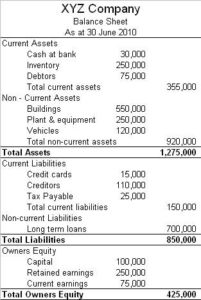Content

Your ending WIP inventory may be seen on your balance sheet under existing assets. Calculating the value of WIP inventory involves associating a cost with a percentage of completion. This can be a bit time-consuming, so it’s typically best to tally it up at the end of your accounting period to minimize uncertainty on your company’s balance sheet. Work in process inventory is the stage immediately before it becomes a finished good.
Some companies find it beneficial to hold on to goods at certain stages of production as insurance against shortages of supply or spikes in demand. Vendor managed inventory agreements are often helpful in determining the right purchase orders to protect against supply chain surprises. Beginning inventory is the dollar value of a company’s inventory at the start of an accounting period. So, if you do quarterly reporting, you’ll need to know the ending WIP inventory for the previous quarter, which is carried over as the beginning WIP inventory for the coming quarter.
How to Calculate Work in Progress (WIP)
Continue reading to learn exactly what is WIP inventory, how to calculate it, why it matters, and how it fits into a healthy supply chain. The term work in progress describes inventory that is partially finished and currently amid the production cycle. Over the next three months, the company incurs production costs of $75,000 roasting, grinding, and packaging coffee beans. The total value of the finished goods over the quarter is $72,000. Work in process inventory and work in progress inventory are interchangeable phrases, for the most part.
How do you calculate beginning work?
The formula is as follows: Ending WIP Inventory = Beginning WIP Inventory + Manufacturing Costs – Cost of finished goods. For example, suppose a company's beginning WIP inventory costs $15,000, their manufacturing costs $50,000 and their cost of finished goods is $45,000.
Get started today – let us show you how we make managing WIP inventory simple! We offer effective, affordable, and efficient solutions for all your logistics needs. Using this figure compared against other metrics, like sales figures or finished goods inventories, can offer insight into how efficiently resources are being managed within your organization.
What is Work in Process (WIP) Inventory?
For supply chain managers, growing WIP inventory levels should be closely monitored. A significant WIP inventory level may indicate bottlenecks in your manufacturing process and that the process needs fixing. You must identify and how to calculate beginning work in process inventory resolve these issues before they harm your bottom line. Under the weighted average method, we use beginning work in process costs AND costs added this period. Under the FIFO method, we will only use the costs added this period.
When a manufacturing order comes in and a forklift driver is sent to fetch the table legs and tabletops, these materials become part of the WIP inventory because they have met with labor. Next, the assembled table is sent to varnishing, whereupon the required amount of varnish also becomes part of WIP, along with the now assembled table. The chief advantage of these systems lies in unified access to real-time production data. This enables deep insight into the actual cost of each product and helps to spot bottlenecks and identify areas for cost reductions and workflow optimizations. Finally, manufacturing overhead costs count toward the WIP account. These are all indirect costs related to manufacturing the unfinished goods, such as wages of supervisors, utilities, upkeep, insurance, depreciation, etc.